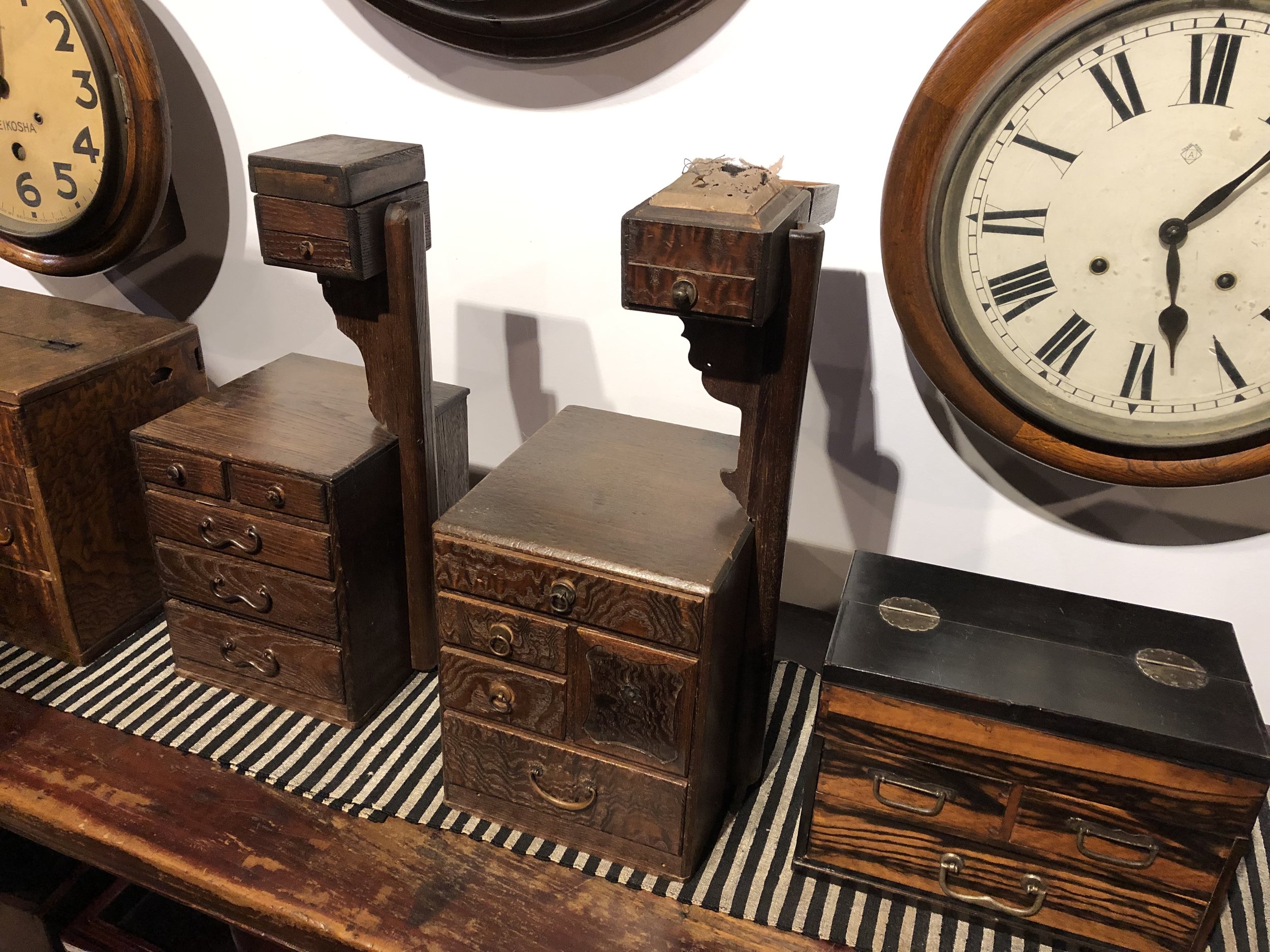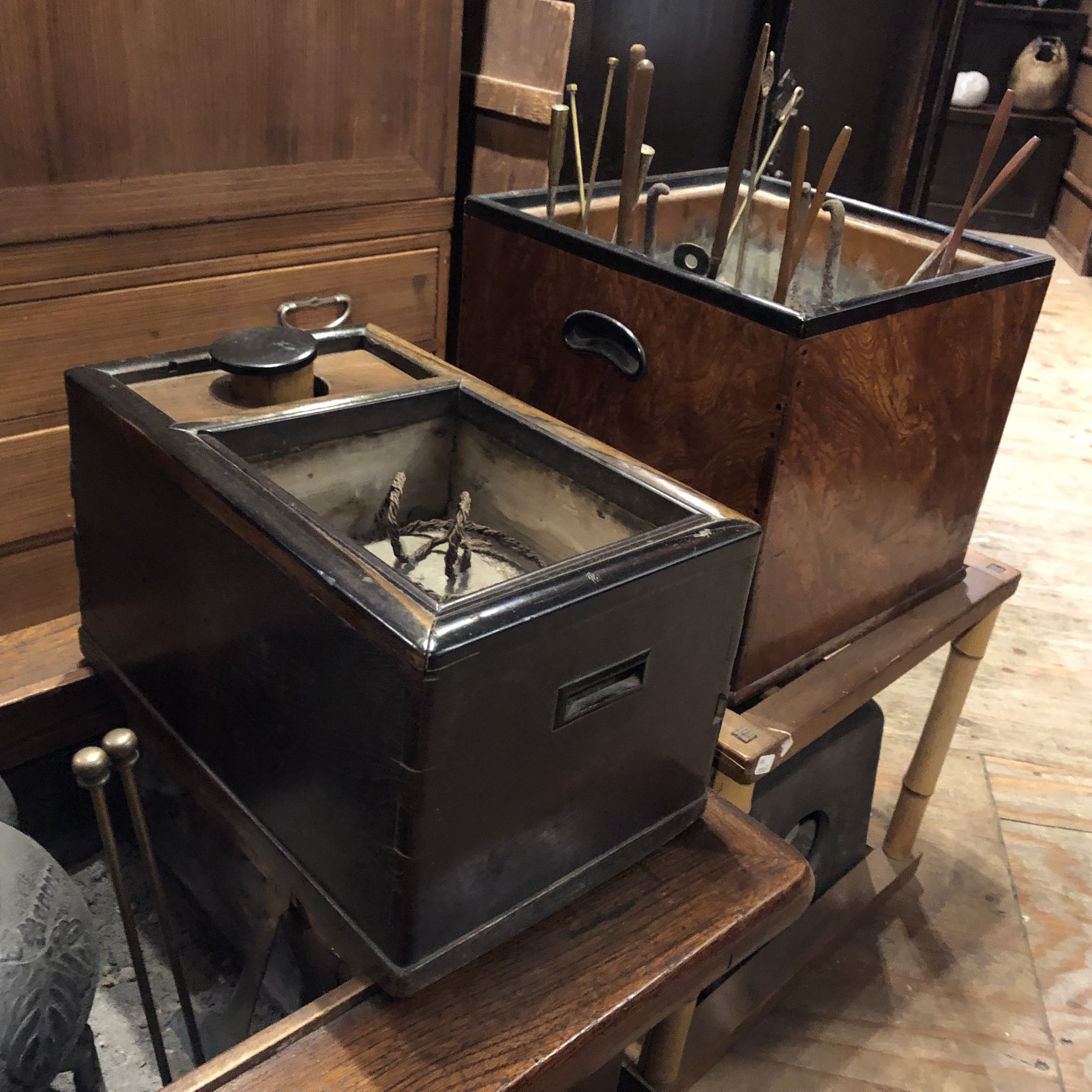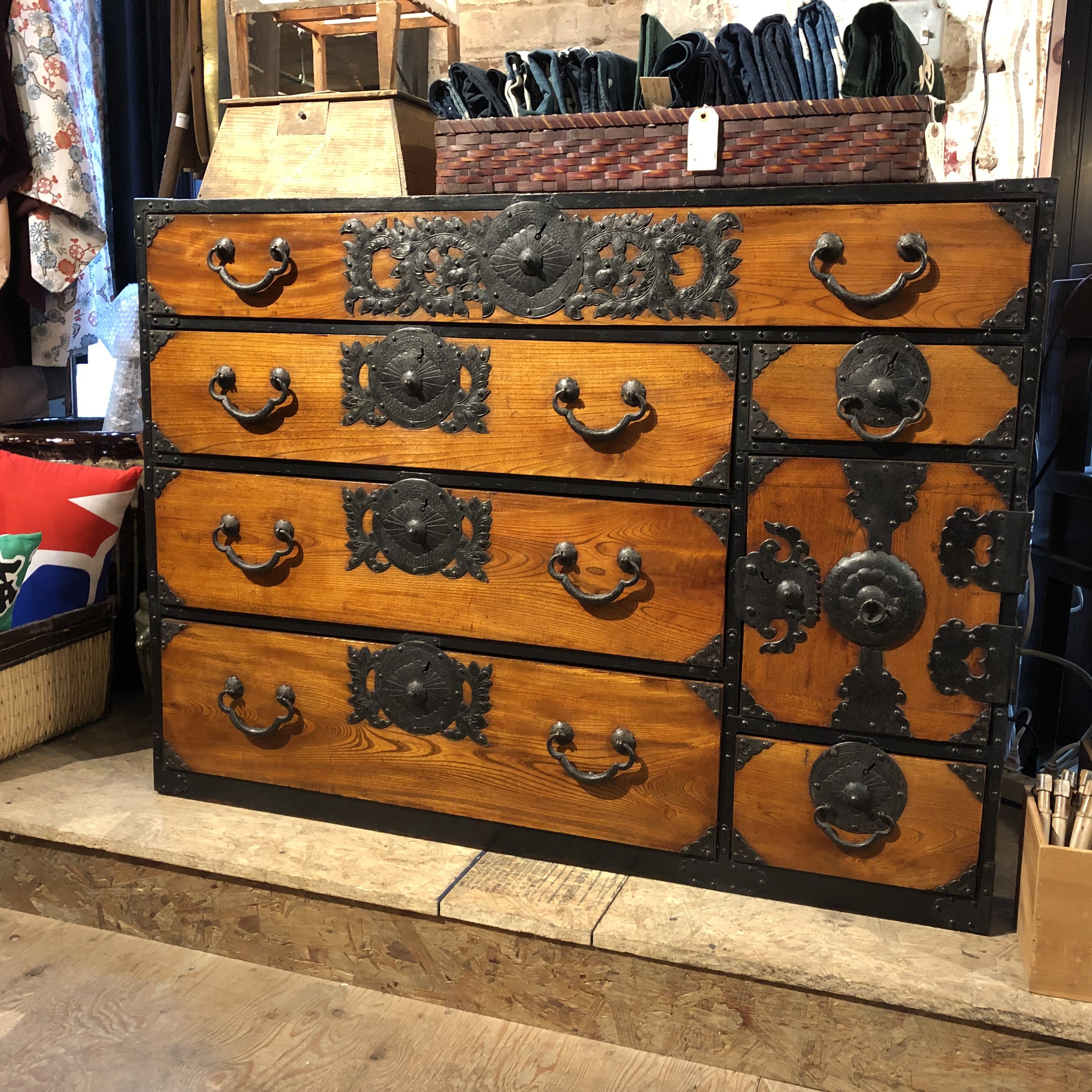While I had stopped in Shibui previously for a quick glance, I never really spent the time to take a close look. Since I’ve become increasingly interested in furniture and traditional Japanese woodworking, I though it was time to stop back in.
To most, it will seem like a store full of old Japanese chests, and on the surface, that’s exactly what it is. However, the informed will notice unusual types of wood, unique finishes, and different case pieces designed for specific purposes. The owner, Dane, was incredibly knowledgeable, and very generous with his time in explaining the different types of ‘tansu’ (chest), and their significance in traditional Japanese culture.
These sea chests (Funa-Dansu) are among the rarest items in the store. They were traditionally used on merchant ships, and would hold valuables such as documents and money. Regional variations exist in the designs, and some of them had secret compartments and false drawers as a means of thwarting thieves.
These sewing chests (Hari bako) were used for storing threads, needles, and other sewing supplies.
The elevated smaller drawers seen on the middle two examples have a top that flips open with a pin cushion inside. This allowed the seamstress to pin their work and free up both of their hands.
The distinctive grain on this example is characteristic of the Japanese mulberry from which it’s made.
Seen here is an example of Tamo ash
These medicine chests (kusuri-dansu) were made of lightweight varieties of wood, so that they were easier for doctors to travel with.
When hardness was a priority, wood from a persimmon tree (the dark wood seen above) was preferred
Persimmon was used for the rim of this tobacco ban so that it would be resistant to having tobacco pipes knocked against it when ashes were being banged out. The "‘hibachi’, on the right, holds burning coals for warming hands and heating small Japanese homes.
These scribe boxes were for holding paper and utensils for Japanese calligraphy
This tansu, it was explained, is meant for a barber to store their scissors, combs, and other tools of their trade. Someone else told me that the characters on the 24 drawers represent the different solar terms of the lunar calendar.
The distinctive finish on this tansu is achieved by covering black lacquer with a coat of red, and then wearing it down until the black beneath begins to show through.
This Sendai Isho-Dansu, made of Japanese elm, was meant to store out of season clothes
Aside from tansu, Shibui offers other types of Japanese antiques, such as ceramics for traditional Japanese tea ceremonies, vintage Japanese kimonos, and other textiles and decorative objects. They also have architectural elements, such as ‘Shoji’, the paper shades or partitions that one would likely recognize from films and TV. For someone decorating a room or home with a Japanese motif, Shibui has a lot to offer. They also have some cheaper knickknacks for whatever tourists might stumble in after taking their photos in the middle of the intersection outside, the one with the iconic view of the Empire State Building beneath the tower of the Manhattan Bridge. For anyone interested in traditional Japanese culture, Dane is a wealth of information, if you are able to engage him.
This post hardly scratches the surface of what Shibui has to offer, and is probably an crude over-simplification of the different types of tansu. Truthfully, I learned so much while I was there, that it was hard for me to remember much of it once I sat down to write this. The video below might be good for those looking to dive a little deeper. Although the audio cuts out at times, it’s still worth watching if the interest is there.













